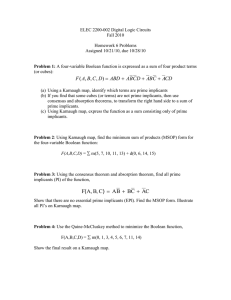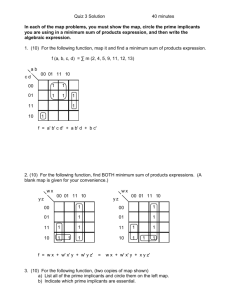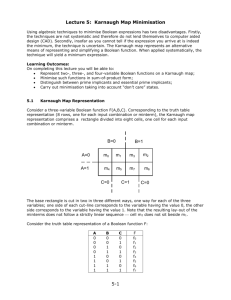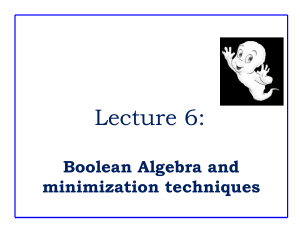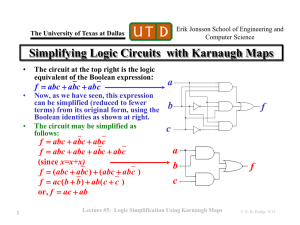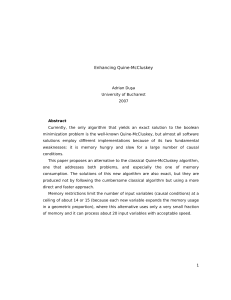ELEC 2200-003 Digital Logic Circuits Fall 2011 Homework 7 Problems
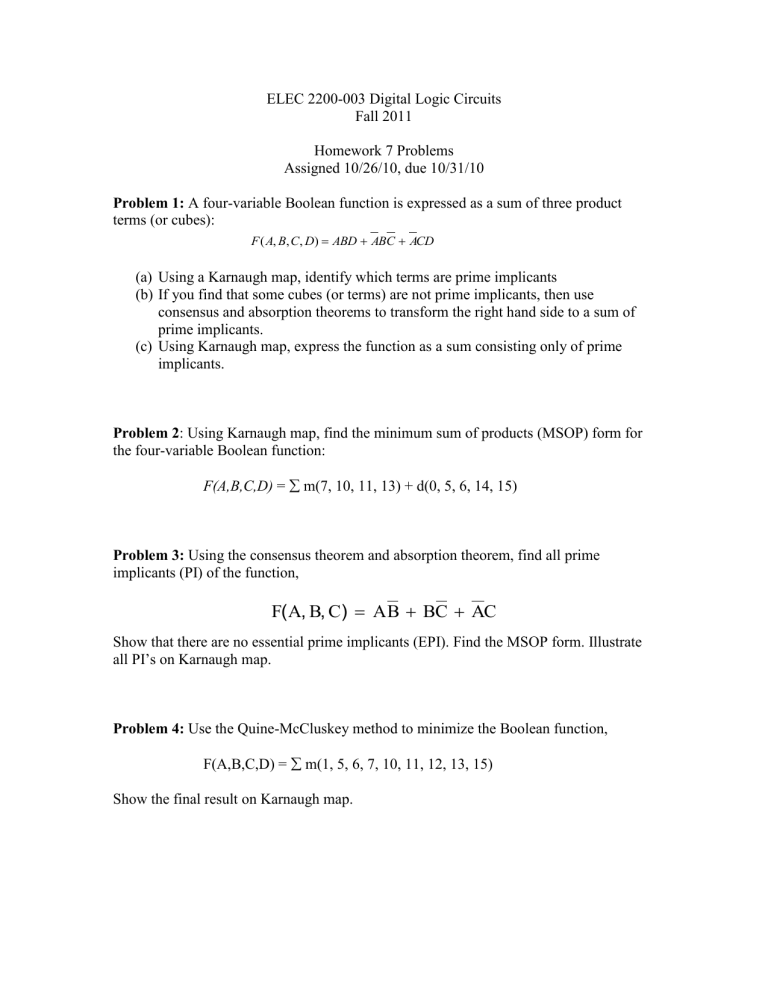
ELEC 2200-003 Digital Logic Circuits
Fall 2011
Homework 7 Problems
Assigned 10/26/10, due 10/31/10
Problem 1: A four-variable Boolean function is expressed as a sum of three product terms (or cubes):
F ( A , B , C , D )
ABD
A B C
A CD
(a) Using a Karnaugh map, identify which terms are prime implicants
(b) If you find that some cubes (or terms) are not prime implicants, then use consensus and absorption theorems to transform the right hand side to a sum of prime implicants.
(c) Using Karnaugh map, express the function as a sum consisting only of prime implicants.
Problem 2 : Using Karnaugh map, find the minimum sum of products (MSOP) form for the four-variable Boolean function:
F(A,B,C,D) =
m(7, 10, 11, 13) + d(0, 5, 6, 14, 15)
Problem 3: Using the consensus theorem and absorption theorem, find all prime implicants (PI) of the function,
F ( A , B , C )
A B
B C
A C
Show that there are no essential prime implicants (EPI). Find the MSOP form. Illustrate all PI’s on Karnaugh map.
Problem 4: Use the Quine-McCluskey method to minimize the Boolean function,
F(A,B,C,D) =
m(1, 5, 6, 7, 10, 11, 12, 13, 15)
Show the final result on Karnaugh map.
